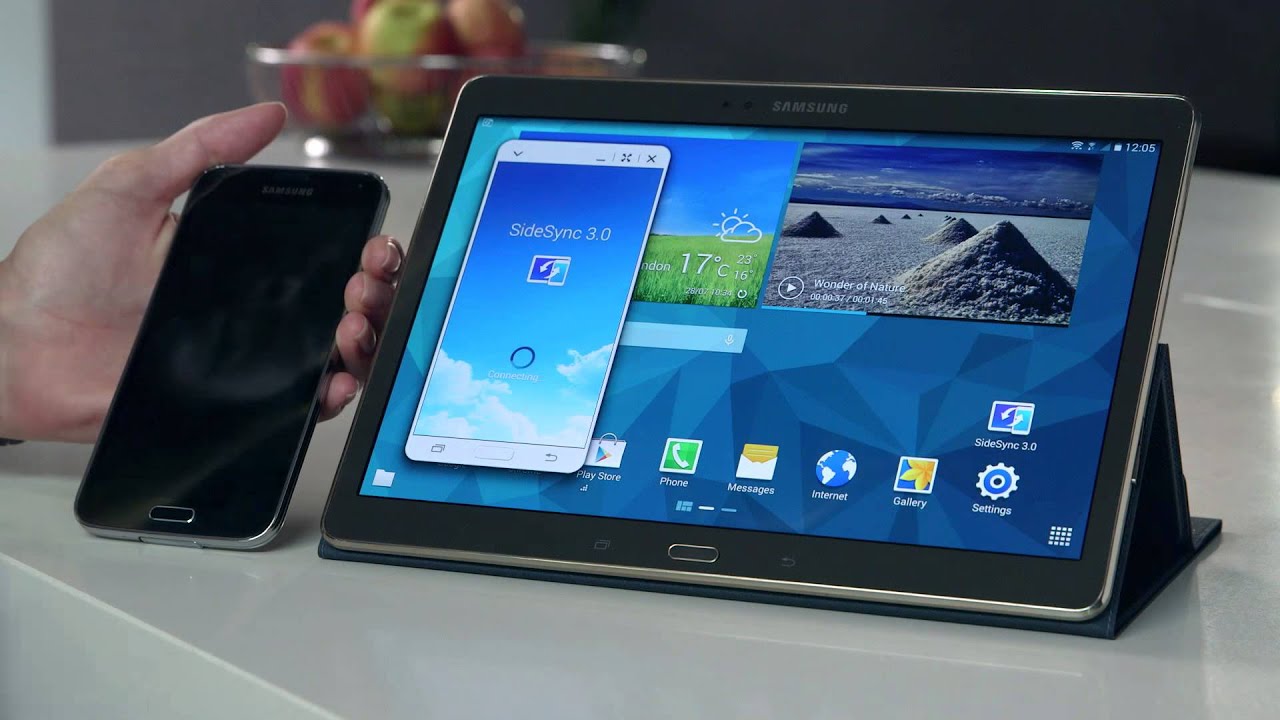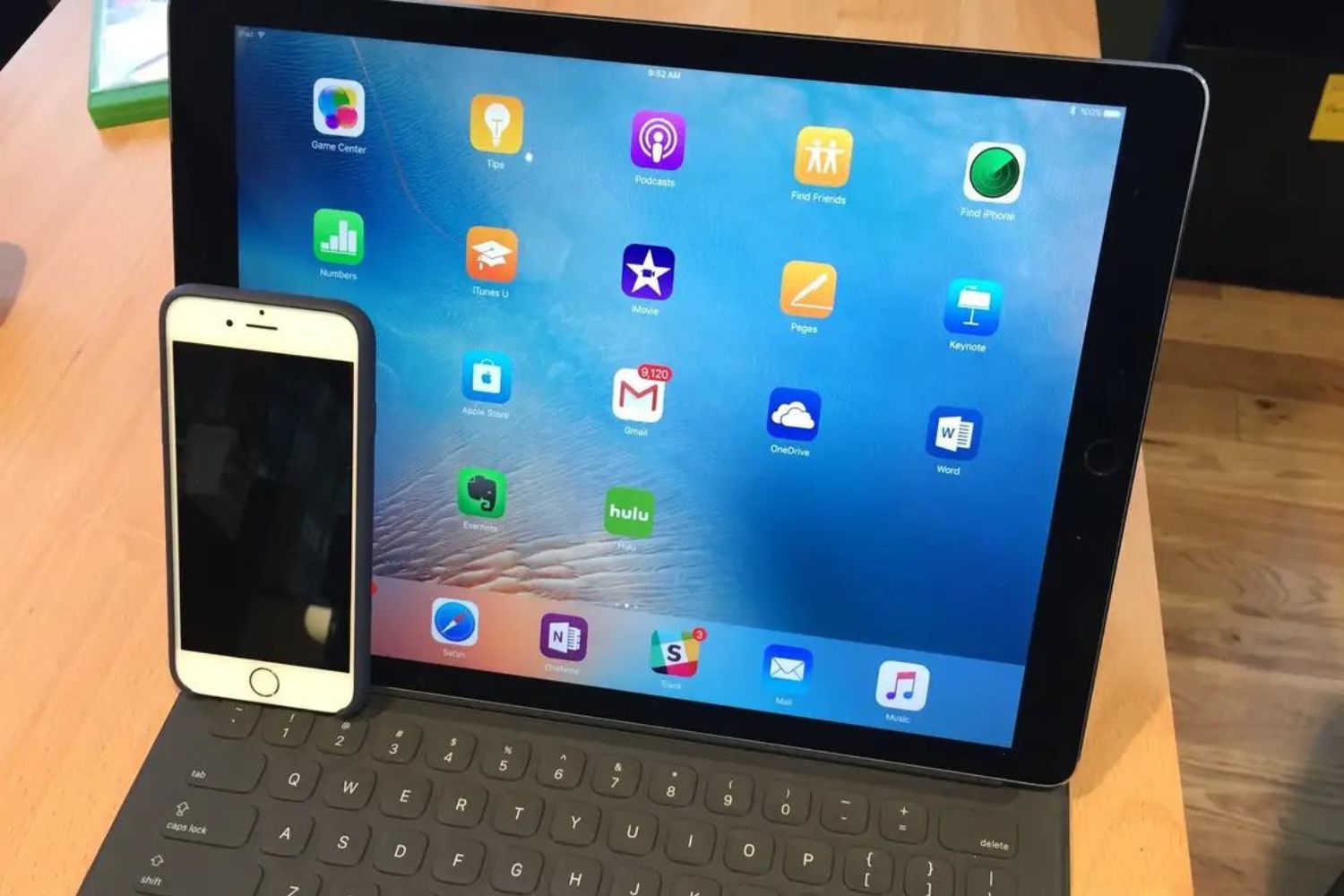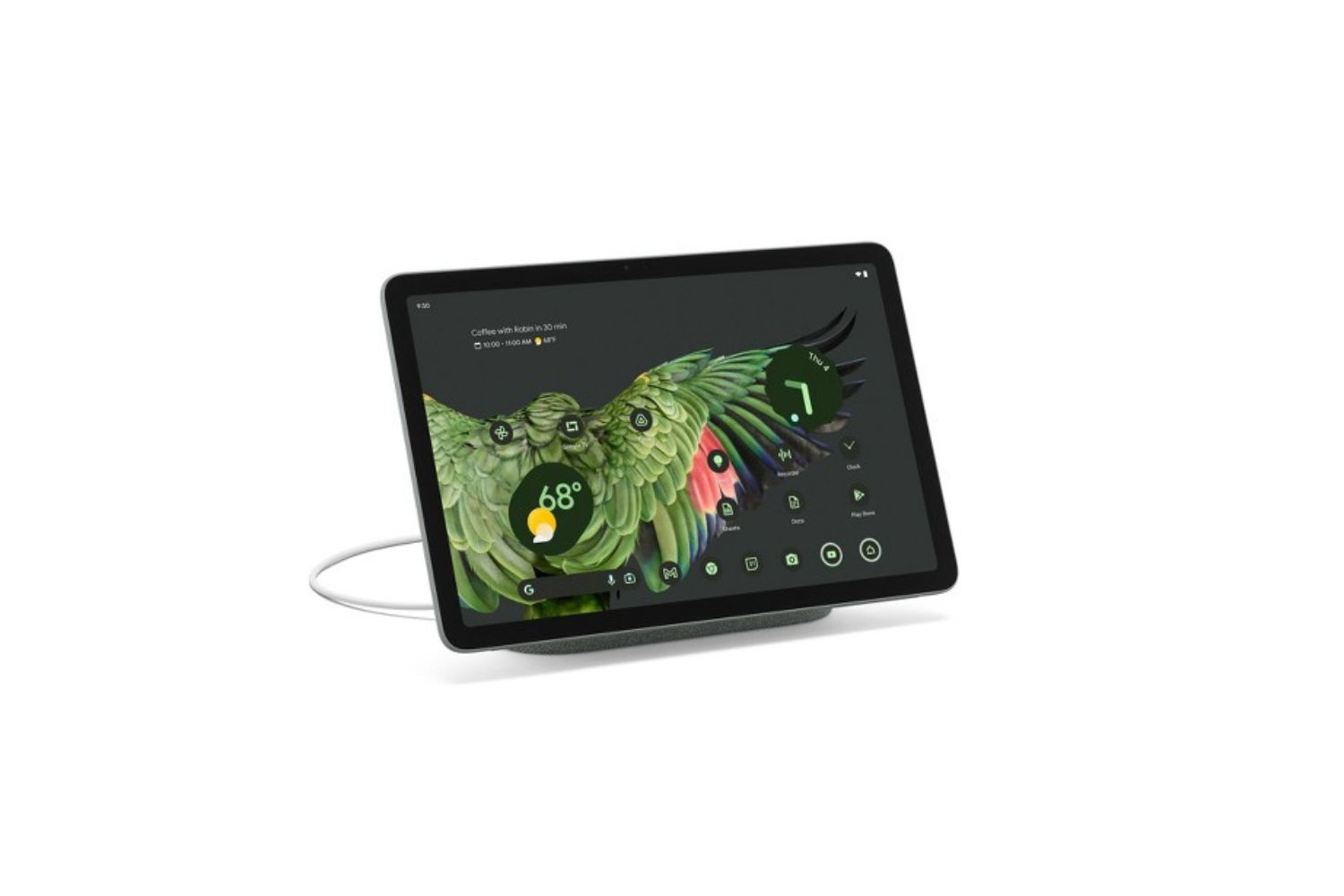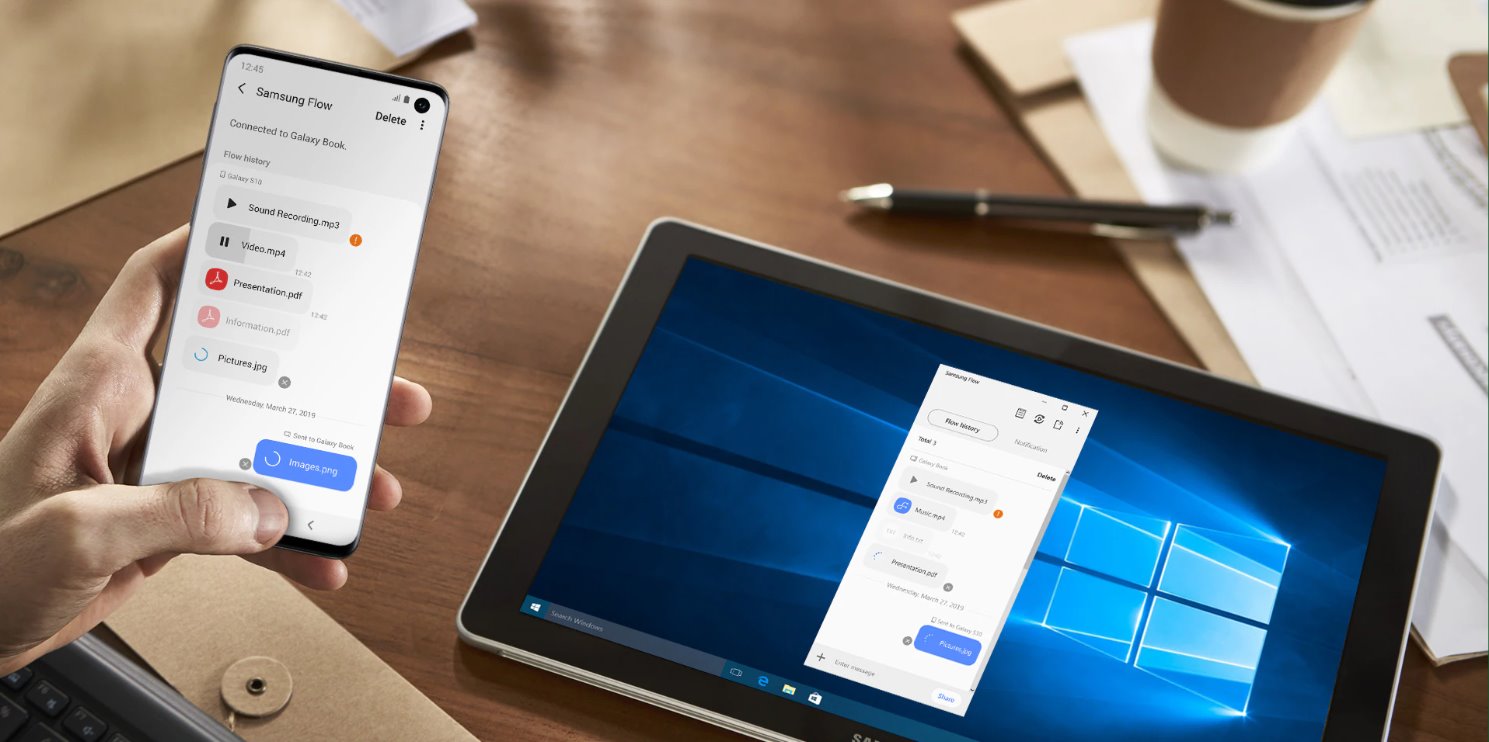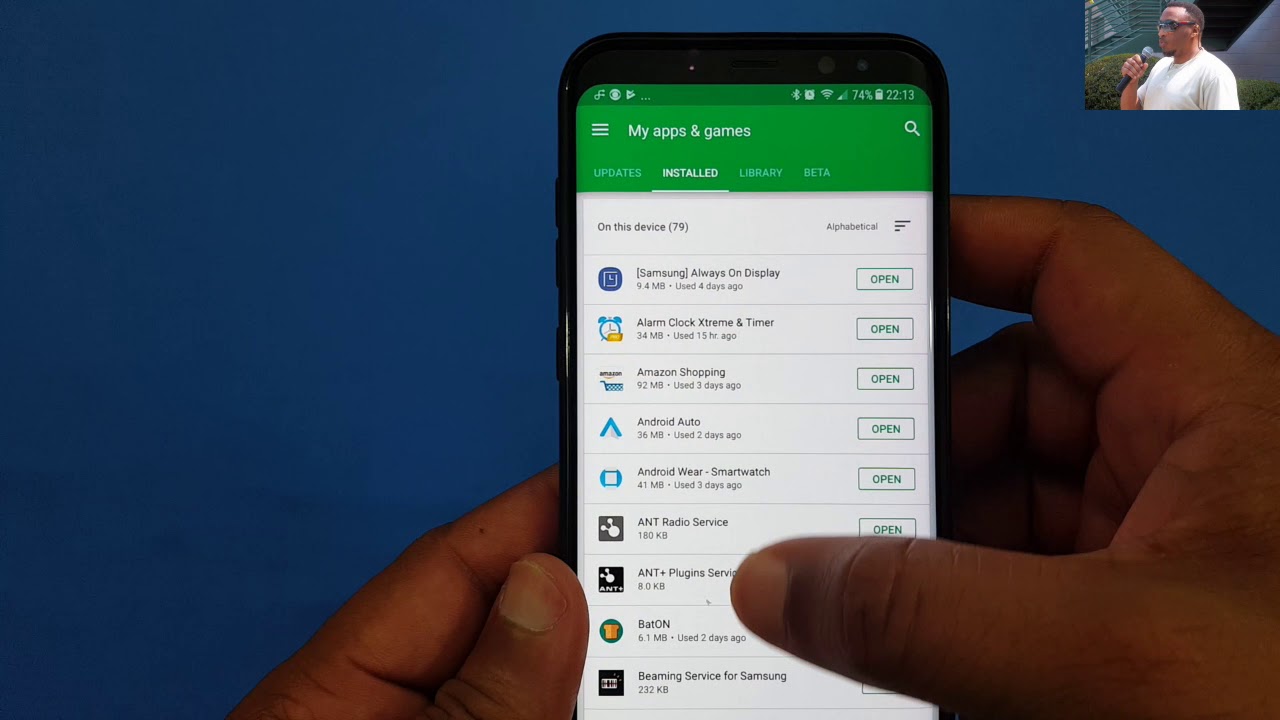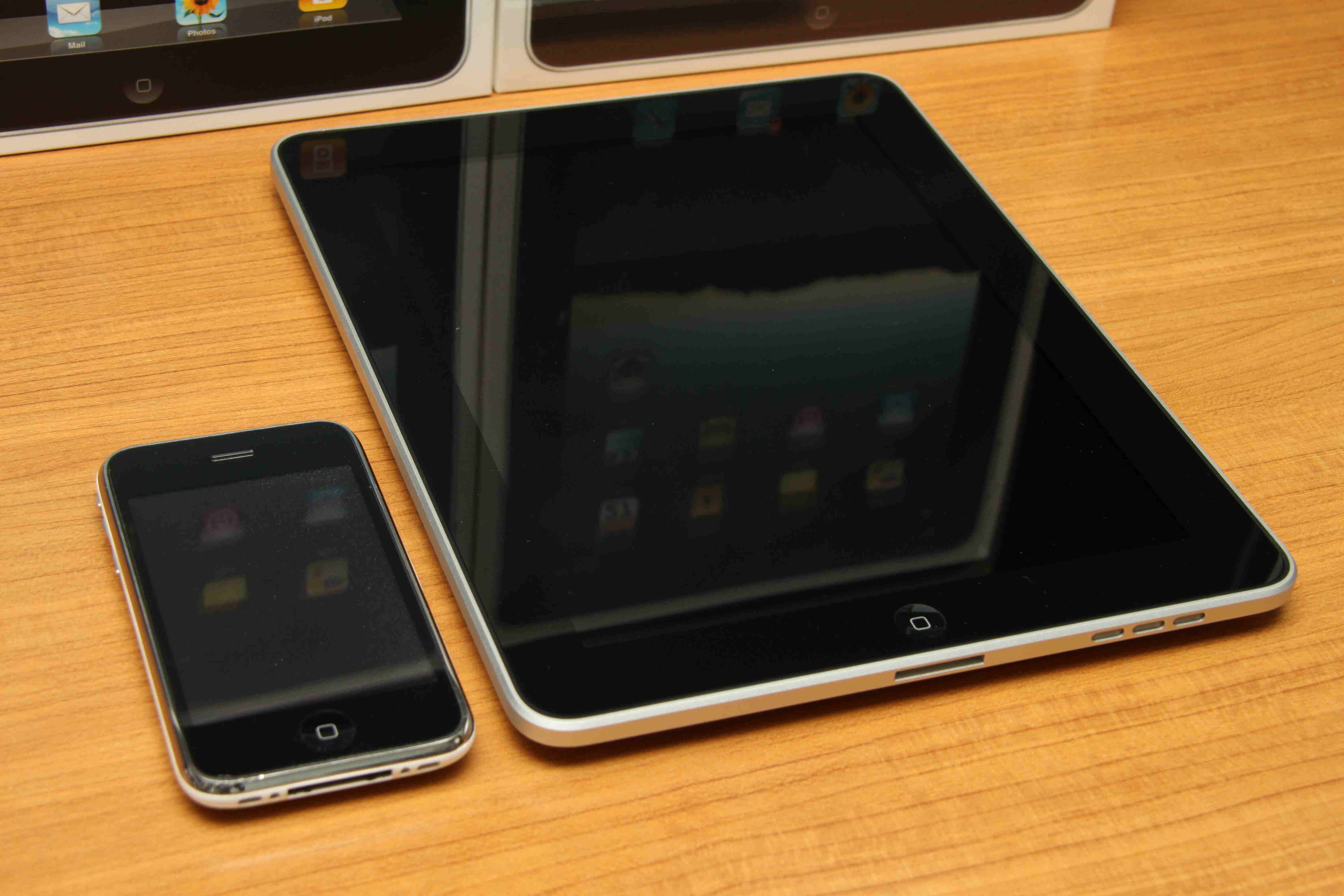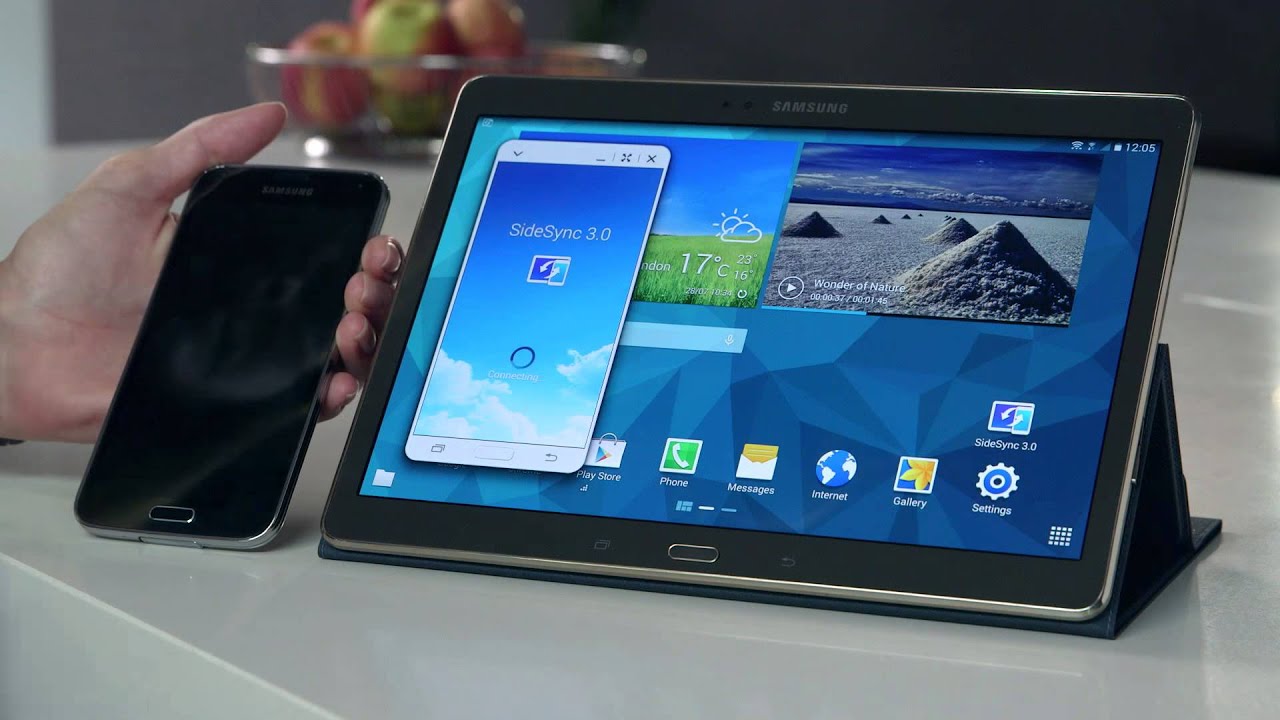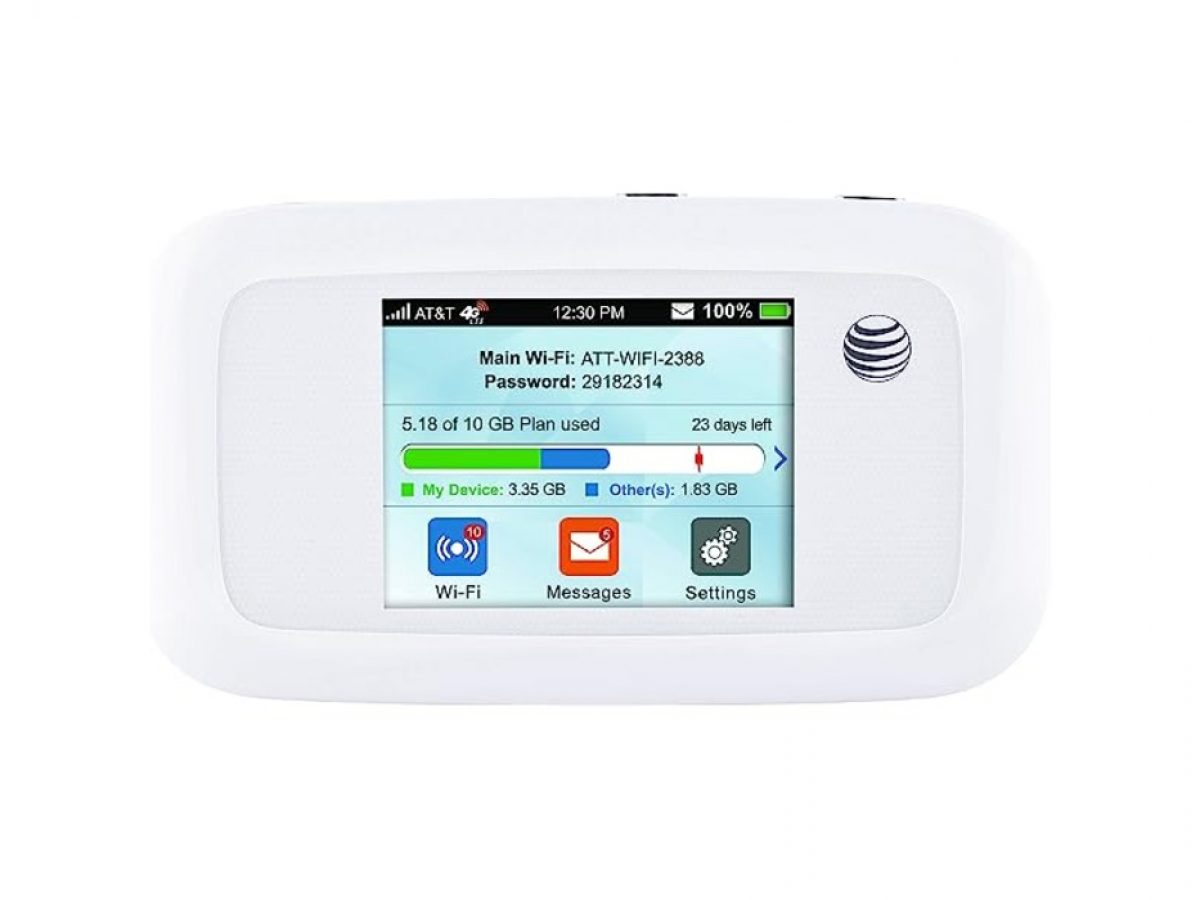Introduction
Linking your tablet to your phone can provide you with a seamless and convenient way to share data, access internet connectivity, and enhance your overall mobile experience. Whether you want to transfer files, establish a connection for internet tethering, or sync notifications and apps between devices, the process of connecting your tablet to your phone can be a game-changer.
By linking your tablet to your phone, you can enjoy the benefits of having a larger screen without sacrificing the portability of your phone. This allows you to effortlessly switch between devices, accessing the same content and staying connected no matter where you are.
In this guide, we will walk you through the step-by-step process of linking your tablet to your phone. The methods we will cover include enabling Bluetooth, connecting to the same Wi-Fi network, utilizing Wi-Fi hotspot functionality, and using built-in features or apps to sync data and files. Whether you have an Android or iOS device, we have got you covered.
Before we dive into the details, it’s important to note that the specific steps may vary slightly depending on the make and model of your tablet and phone. However, the general concepts will remain the same, and with a little bit of exploration and adaptation, you will be able to successfully link your devices.
So, if you’re ready to unlock the full potential of your tablet-phone combination, grab your devices, and let’s get started on this exciting journey of connectivity!
Step 1: Enable the Bluetooth on your tablet and phone
The first step in linking your tablet to your phone is to enable the Bluetooth functionality on both devices. Bluetooth allows for wireless communication between devices, making it essential for establishing a connection.
To enable Bluetooth on your tablet, go to the Settings menu and look for the Bluetooth option. Once you locate it, toggle it on. On most devices, you can also access the Bluetooth settings by swiping down from the top of the screen to reveal the quick settings panel.
Similarly, enable Bluetooth on your phone by navigating to the Settings menu and finding the Bluetooth option. Toggle it on to ensure that your phone is discoverable to nearby devices.
Once Bluetooth is enabled on both your tablet and phone, the devices should start searching for each other. On your tablet, you will see a list of available devices. Tap on your phone’s name when it appears in the list. Some devices may require a pairing code, which you will need to confirm on both devices to establish a secure connection.
Once the connection is established, you will see a notification or symbol indicating that your tablet and phone are now paired via Bluetooth. This means that you can now start utilizing the benefits of a linked tablet and phone.
It is worth mentioning that the process of enabling Bluetooth and pairing devices may vary slightly depending on the operating system and device manufacturer. However, the core steps should remain consistent, and with a bit of exploration through the Settings menu, you will be able to successfully connect your devices.
Now that your tablet and phone are paired via Bluetooth, you can proceed to the next steps to further enhance their connectivity and synchronization.
Step 2: Pair your tablet with your phone
Once you have enabled Bluetooth on your tablet and phone, the next step is to pair the two devices. Pairing establishes a secure and permanent connection between your tablet and phone, allowing for seamless communication and data transfer.
To begin the pairing process, ensure that the Bluetooth settings are open on both your tablet and phone. On your tablet, look for the list of available devices and select your phone’s name. Depending on your device, you may need to enter a passcode or confirm a pairing request on both devices for the connection to be established.
After confirming the pairing on both devices, you should see a notification or indicator indicating that your tablet is now paired with your phone. This means that the devices can communicate with each other and share data wirelessly.
It’s important to note that the specific steps may vary depending on the operating system and device manufacturer. However, the general process of pairing should be similar across most devices. If you encounter any issues during the pairing process, consult the user manual or online resources specific to your tablet and phone models for detailed instructions.
Once the pairing is complete, you will now have a strong and secure connection between your tablet and phone. This opens up a world of possibilities for sharing files, syncing notifications, and seamlessly switching between devices.
Now that your tablet is successfully paired with your phone, you can proceed to explore and utilize the various features that come with a linked tablet and phone. From syncing your email and calendar to accessing shared documents, the possibilities are endless.
In the next steps, we will cover additional methods to enhance the connectivity between your tablet and phone. So, let’s move on to the next step and see what more you can do with your linked devices.
Step 3: Ensure both devices are connected to the same Wi-Fi network
To establish a seamless connection between your tablet and phone, it’s crucial to ensure that both devices are connected to the same Wi-Fi network. This is especially important for features like file sharing, screen mirroring, and syncing data.
Start by accessing the Wi-Fi settings on your tablet. Look for the list of available networks and connect to the same Wi-Fi network that your phone is connected to. If you don’t see the network, make sure that the Wi-Fi is enabled on your tablet and that you are within the range of the router.
On your phone, go to the Wi-Fi settings and ensure that it is connected to the desired network. If you are connected to a different network, switch to the same network that your tablet is connected to.
Once both devices are connected to the same Wi-Fi network, they will be able to communicate with each other seamlessly. This enables you to transfer files, stream media, and utilize various interconnected features.
It’s worth mentioning that in some cases, you may need to enable certain permissions or settings on both devices to ensure smooth connectivity over the Wi-Fi network. For example, on Android devices, you may need to enable Wi-Fi Direct or Nearby Share for easy file sharing between your tablet and phone.
By ensuring that both your tablet and phone are connected to the same Wi-Fi network, you’ll be able to take full advantage of the interconnected features and functionalities that these devices offer. So, make sure to double-check the Wi-Fi connection on both devices and proceed to the next steps to further enhance the connectivity between your tablet and phone.
Step 4: Enable the Wi-Fi hotspot on your phone
Enabling the Wi-Fi hotspot on your phone allows you to share its internet connection with your tablet. This is particularly useful when your tablet does not have a cellular data option or if you want to conserve your mobile data usage.
To enable the Wi-Fi hotspot on your phone, go to the Settings menu and look for the “Hotspot” or “Tethering” option. Once you find it, tap on it to access the hotspot settings.
In the hotspot settings, you’ll be able to toggle on the Wi-Fi hotspot feature. You may also have the option to customize the hotspot name (SSID) and password. It’s recommended to set a strong and secure password to prevent unauthorized access to your hotspot.
Once the Wi-Fi hotspot is turned on, your phone will start broadcasting a network signal that your tablet can connect to. On your tablet, go to the Wi-Fi settings and look for the network name (SSID) of your phone’s hotspot. Tap on the network name and enter the password you set on your phone, if prompted. Your tablet should then connect to the Wi-Fi hotspot.
It’s important to note that using the Wi-Fi hotspot on your phone may consume your mobile data, depending on your cellular plan. Make sure to monitor your data usage to avoid any surprises on your monthly bill.
By enabling the Wi-Fi hotspot on your phone, you are now able to share its internet connection with your tablet. This opens up a world of possibilities for browsing the web, streaming media, and utilizing online services on your tablet, even if it doesn’t have its own cellular data option.
Now that your Wi-Fi hotspot is activated, you can move on to the next step to connect your tablet to the hotspot and enjoy the internet connectivity on your tablet as well.
Step 5: Connect your tablet to the Wi-Fi hotspot
Now that you have enabled the Wi-Fi hotspot on your phone, it’s time to connect your tablet to the hotspot and enjoy the internet connectivity on your tablet as well. By connecting your tablet to the Wi-Fi hotspot, you can access the internet using your phone’s mobile data.
On your tablet, go to the Wi-Fi settings and look for the Wi-Fi network list. You should see the network name (SSID) of the Wi-Fi hotspot that your phone is broadcasting. Tap on the network name to connect to the hotspot.
If you have set a password for your phone’s hotspot, you will be prompted to enter it on your tablet. Once you enter the correct password, your tablet will establish a connection to the Wi-Fi hotspot.
After successfully connecting to the Wi-Fi hotspot, your tablet will now have access to the internet through your phone’s mobile data. You can browse the web, use online services, and download apps on your tablet just as you would on a regular Wi-Fi network.
It’s important to keep in mind that using the Wi-Fi hotspot on your phone consumes your mobile data, so it’s advisable to monitor your data usage to avoid any unexpected charges. If you have a limited data plan, you may want to consider disabling the hotspot when not in use to conserve your data allowance.
By connecting your tablet to the Wi-Fi hotspot, you can enjoy internet connectivity on your tablet using your phone’s mobile data. This is especially useful when you’re on the go, away from Wi-Fi networks, or when your tablet doesn’t have its own built-in cellular data option.
Now that your tablet is connected to the Wi-Fi hotspot, you can move on to the next steps to further enhance the connectivity and synchronization between your tablet and phone.
Step 6: Utilize built-in functionality or apps to sync your tablet and phone
To enhance the connectivity and synchronization between your tablet and phone, you can take advantage of the built-in functionality or apps provided by your devices. These features allow you to seamlessly share data, notifications, and even control certain aspects of your phone from your tablet.
One common built-in functionality is the ability to sync your email, contacts, and calendar across devices. By signing in with the same account on both your tablet and phone, you can ensure that your important information stays consistent and up-to-date on both devices. This way, you can access your emails, contacts, and schedule from either device without having to manually transfer or update them.
Another useful built-in feature is the ability to sync your photos and videos. Depending on the operating system, there are different options available. For Android devices, you can enable automatic backup and sync using Google Photos. This allows you to access your photos and videos from both your tablet and phone seamlessly. iOS devices have a similar functionality with iCloud Photos, which syncs your media across all your Apple devices.
Apart from the built-in features, there are also various third-party apps available that can enhance the synchronization between your tablet and phone. For example, apps like Pushbullet or Join allow you to sync notifications between devices, transfer files, and even send SMS messages from your tablet using your phone’s number. These apps provide a seamless and convenient way to stay connected and manage your devices.
To find the built-in functionality or apps that best suit your needs, explore the settings and app stores on both your tablet and phone. Read reviews, check compatibility, and try out different options to find the ones that work best for you.
By utilizing the built-in functionality or apps to sync your tablet and phone, you can seamlessly share data, notifications, and control between devices, creating a more integrated and efficient mobile experience.
Now that you have explored the built-in features and apps, it’s time to move on to the next step and learn how to transfer files between your tablet and phone.
Step 7: Transfer files between your tablet and phone
Transferring files between your tablet and phone is a common need, whether you want to share photos, documents, or other media. Thankfully, there are several methods you can use to accomplish this seamlessly.
One simple way to transfer files is by using a cloud storage service. Apps like Google Drive, Dropbox, or iCloud allow you to upload files from your tablet and access them on your phone, or vice versa. Simply upload the files from one device and then download them on the other. This method is convenient as it avoids the need for physical connections or cables.
If you prefer a direct transfer without relying on the internet, you can use various connection methods, such as USB cables, Wi-Fi Direct, or Bluetooth. For USB transfer, connect your tablet to your phone using a compatible USB cable and then access the files through the file manager or file transfer software on both devices.
To transfer files via Wi-Fi Direct, ensure that both your tablet and phone have Wi-Fi Direct capabilities. Enable Wi-Fi Direct on both devices and then establish a connection between them. Once connected, you can use a file transfer app to send and receive files between the devices at high speeds.
Bluetooth is another wireless option for file transfer. Enable Bluetooth on both your tablet and phone, pair the devices, and then use a file transfer app or the built-in file sharing feature to send and receive files. Bluetooth transfer is convenient for smaller file sizes but may be slower than other methods.
Regardless of the method you choose, it’s important to ensure that both your tablet and phone have sufficient storage space to accommodate the files you want to transfer. Additionally, be mindful of file formats and compatibility between devices to ensure smooth file playback or access on both ends.
By utilizing one of these file transfer methods, you can seamlessly share and access files between your tablet and phone, making it easier to manage your media and documents wherever you go.
Finally, with the file transfer knowledge in hand, let’s move on to the last step where we discuss some troubleshooting tips for common issues you may encounter while linking your tablet to your phone.
Step 8: Troubleshooting common issues
While linking your tablet to your phone, you may encounter some common issues that can hinder the seamless connection between the devices. Luckily, most of these issues can be easily resolved with a few troubleshooting steps. Here are some common issues and their potential solutions:
1. Bluetooth pairing failure: If you are unable to pair your tablet with your phone via Bluetooth, ensure that both devices are in pairing mode and within close proximity. Restarting both devices and clearing the Bluetooth cache can also help resolve pairing issues.
2. Failed Wi-Fi connection: If you’re unable to connect your tablet to the Wi-Fi hotspot on your phone, double-check that both devices are connected to the same Wi-Fi network. Verify that the hotspot is activated on your phone and that the correct password is entered on your tablet. You may need to reset the network settings on one or both devices to resolve any connectivity issues.
3. File transfer problems: If you’re having difficulty transferring files between your tablet and phone, ensure that both devices have sufficient storage space and are compatible with the file formats you’re trying to transfer. If using cloud storage or file transfer apps, make sure you have a stable internet connection. Restarting the devices or trying a different transfer method, such as USB or Wi-Fi Direct, may also help.
4. Syncing issues: If you’re experiencing problems with syncing your data or notifications between your tablet and phone, ensure that both devices are signed in with the same account and have syncing options enabled. Restarting the devices and updating the relevant apps or operating systems can also resolve syncing issues.
5. Battery drain: Linking your tablet to your phone may sometimes lead to increased battery drain, especially if you’re using features like Wi-Fi hotspot or continuous syncing. To mitigate this issue, optimize battery settings on both devices, disable unnecessary background processes, and monitor battery usage to identify any power-hungry apps or features.
If you encounter any other issues while linking your tablet to your phone, it’s recommended to consult the user manual, online forums, or official support channels for your specific devices. As technology varies, the troubleshooting steps may differ based on your tablet and phone models.
By troubleshooting these common issues, you can ensure a smooth and hassle-free experience while linking your tablet to your phone, allowing you to make the most out of their connected features.
Conclusion
Linking your tablet to your phone opens up a world of possibilities for seamless connectivity, data sharing, and enhanced functionality. By following the steps outlined in this guide, you can establish a strong and efficient connection between your devices.
Throughout this guide, we have covered important steps, including enabling Bluetooth, pairing your tablet with your phone, connecting to the same Wi-Fi network, enabling the Wi-Fi hotspot, utilizing built-in functionality or apps for synchronization, transferring files, and troubleshooting common issues. By successfully completing these steps, you can enjoy a truly integrated and efficient experience across your tablet and phone.
Remember, the specific methods and steps may vary depending on the make and model of your devices, but the principles remain the same. It’s important to consult the user manuals and online resources specific to your tablet and phone to ensure accurate and detailed instructions.
By linking your tablet to your phone, you can enjoy the benefits of a larger screen, seamless data synchronization, and enhanced connectivity. Whether you’re transferring files, managing notifications, or accessing shared content, the connected experience between your tablet and phone can greatly enhance your productivity and convenience.
So, don’t hesitate to explore, experiment, and make the most out of the capabilities and features that come with linking your tablet to your phone. Stay connected, stay productive, and enjoy the full potential of your mobile devices.
Happy linking!







